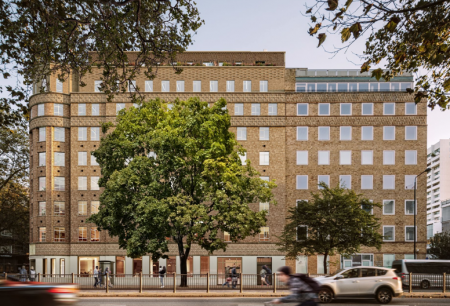PBC’s new head of Flex Delivery, Jack Dison, examines why providers are turning to Flex office space and the development process behind it.
With the announcement of a new Head of Flex Delivery, PBC has created a team dedicated to the workspace model that shows no sign of abating. There are now several, leading developer-adopters who are diversifying into Flex office space, and managed space providers who are using brand to secure occupiers who want to work, and lease space, differently.
But Flex workspace requires a different delivery model to traditional office space with higher upfront costs and a more detailed specification within a quicker programme. How does this impact the professional team and the way in which today’s office spaces are developed? Jack Dison delves into the topic below:
Flex office space offers greater efficiency and adaptability
For landlords, office developers and managed office providers, Flex office space presents a compelling opportunity. It enables our clients to attract a wider range of tenants who are seeking agile workspaces; it can offer higher occupancy rates and shorter vacancy periods and this increased revenue and faster return is attractive to investors.
Over the past five years, the Flex model has gained momentum. We are now working with some of the country’s leading real estate and investment companies within a Flex space capacity and have seen the changes in delivery compared to the traditional Cat A model. Flex landlords and managed space providers need to spend more capital upfront to deliver high-quality, sustainable and desirable workspaces that are ready for immediate move-in. As a result, they are looking to bring their spaces to market more quickly to make a return on the higher initial expenditure.
A team tailored to delivering a multifaceted approach
As a professional team, a way to achieve this is to create increased efficiencies throughout the program and do this while managing the additional elements that are pertinent to Flex, such as higher-quality amenities, well-being spaces, and higher sustainability credentials. We need to find a way to shorten the programme while delivering more.
The ‘traditional’ offices delivered to Cat A stage have different considerations within their programmes. The Flex space often bypasses the Cat A stage to deliver a full Cat B fit out and so there are far more key performance indicators regarding sustainability and quality which require scrutiny. Despite the savings in cost and programme that come from moving straight into Cat B fit out, Flex costs can still seem inflated.
One reason is the increase in number of consultants involved in the design process; whereas the early design stages for Cat A had a developer’s design team, a Flex delivery professional team now includes interior designers, lighting, acoustic and technology specialists, and these all add more complexity to the process.
An increase in collaboration and flexibility between the consultants is fundamental to the Flex process but this more collegiate approach has been on the rise over the past few years driven by, amongst other things, the shortage of labour and the rise in cost of materials. There has been a change in culture, it is more important than ever that design and construction are delivered within the timeframes in which budgets remain viable.
Ensuring compliance and regulatory needs are met
Unlike more traditional office development, there is more to consider at the viability stage as not all assets can cater for the Flex model. Floor plates must be the right size and be developed to be split easily; the building’s fire strategy needs to be considered within the context of how the floor plates may be divided once let. Design-wise the space needs to be able to accommodate amenity areas with the necessary M&E provision. Outdoor space, such as roof terraces is proving important to tenants and needs to be considered and or created by a landlord or managed space provider.
Last year’s update of the Building Safety Act (BSA) also impacts all stakeholders involved in a construction project, namely the client, the principal contractor and the principal designer.
This greater responsibility and scrutiny on building safety and statutory compliance requires the team to have more in-depth knowledge of safety legislation. Our advantage, as building surveyors, as well as project managers, is we can start this conversation at an early stage and look to positively influence the design and assist in collaboration among the design team members.
Although introduced in October, disciplines across the professional teams are still getting to grips with the BSA and its impact on assets in development; it is within our capabilities to support the client on how to develop in line with the BSA.
These new approaches did not occur overnight, the evolution of the office space to where we are today – and it continues to evolve – has been gradual. The rise of Flex space was starting more than 10 years ago when technology enabled greater flexible working amongst employees.
Adapting to the post-pandemic demands for office spaces
COVID-19 contributed to the demise of many of the large-floorplates across the city as employers recognised an opportunity to ratify space. Due to perceived low productivity and lack of employee-collaboration, post-COVID, employers are encouraging their workers back to the office. In this time, employee demand has changed, users now want spaces that look less like a traditional office. Developers and managed space providers are using well-designed, high-quality and hospitality- influenced amenities, to compete.
Landlords’ commitment to deliver amenity also requires a different mindset; it is one they need to navigate and one that we reinforce as a cost consultant. Today’s Grade A assets are determined predominantly by their availability of social spaces. The expectation for high spec, including the back of house areas such as end of trip facilities and bike storage is real. It is no longer viable for an asset to offer secondary or tertiary space, and this equals a great deal of cost.
With Flex there is also the wider tenant management component to consider and this significantly affects the delivery model because now landlords need to be involved in the design process from the outset.

Flex workspace will continue to evolve, driven by demand and competition, and delivery of these spaces will need to align with the changes as they arise. The emphasis on increased collaboration across the professional team can only be of benefit to the industry. We will all have to support each other if the need to deliver more, more quickly and at a higher quality, continues.
Jack Dison
Head of Flex Delivery, PBC
Published on PBC Today 16/07/2024


